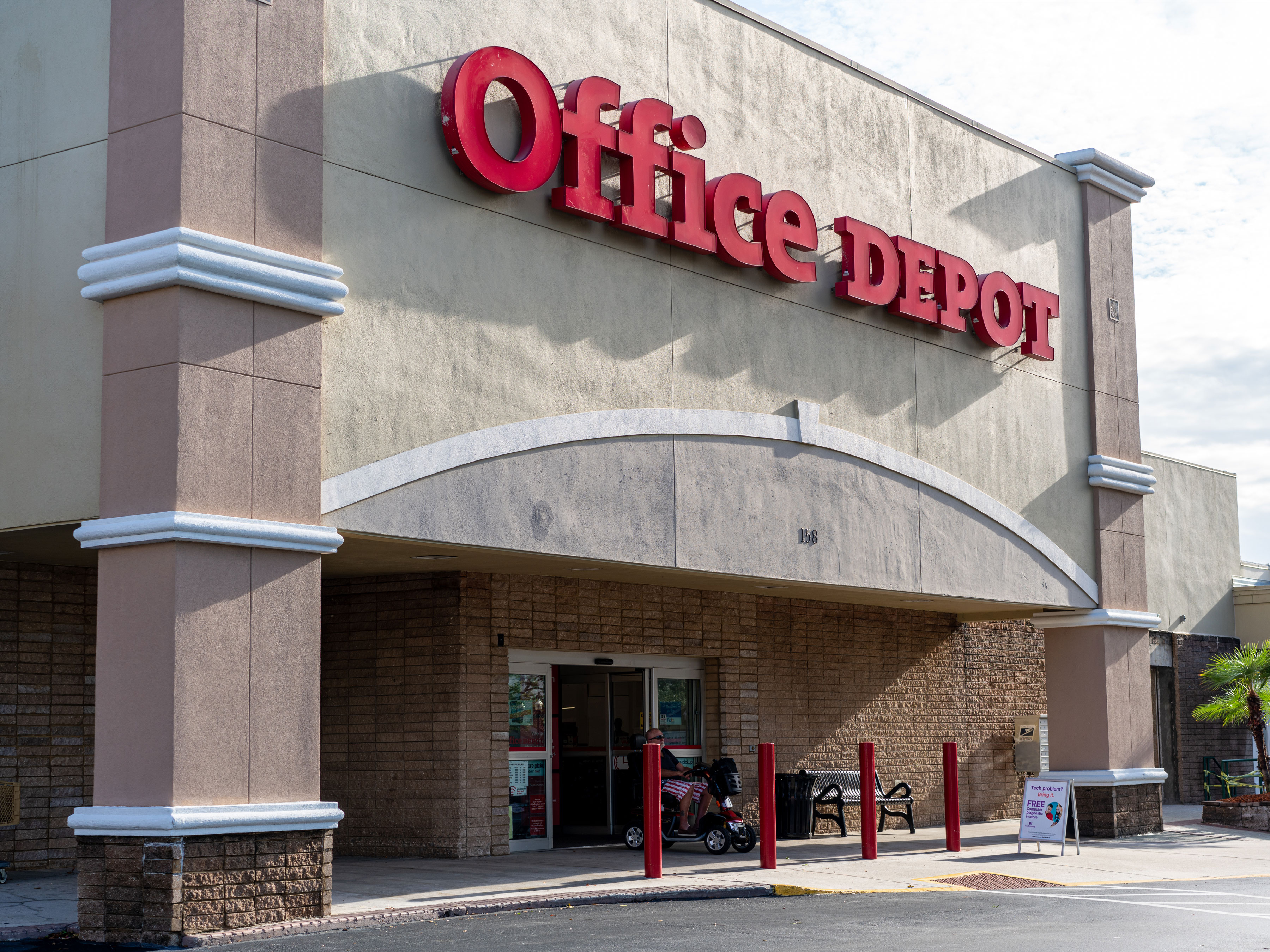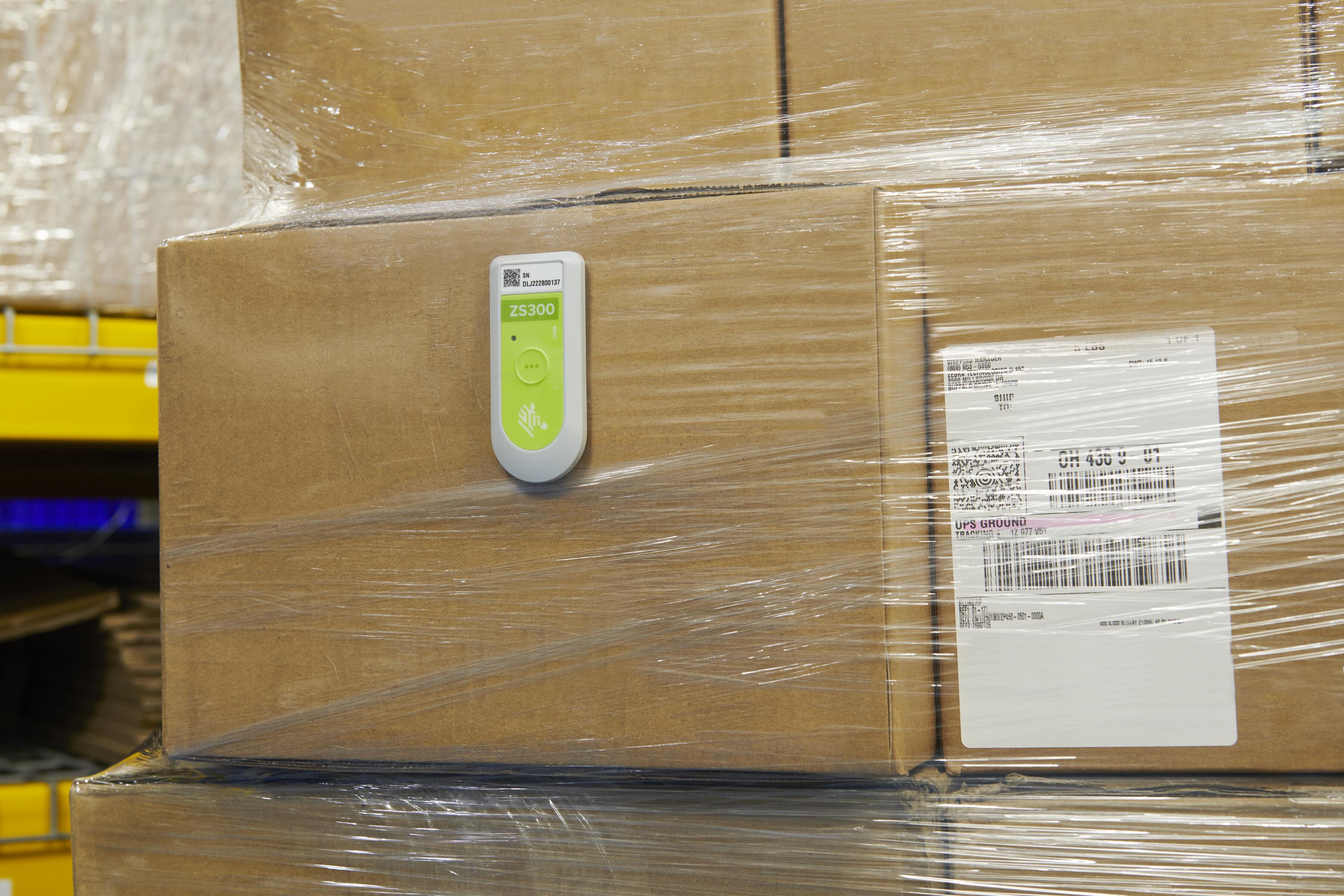Transform retail operations with Zebra’s retail technology solutions, featuring hardware and software for improving inventory management and empowering teams.
Streamline operations with Zebra’s healthcare technology solutions, featuring hardware and software to improve staff collaboration and optimise workflows.
Enhance processes with Zebra’s manufacturing technology solutions, featuring hardware and software for automation, data analysis, and factory connectivity.
Zebra’s transportation and logistics technology solutions feature hardware and software for enhancing route planning, visibility, and automating processes.
Zebra's public sector technology solutions enhance decision-making, streamline operations, and safeguard communities with advanced software and rugged hardware.
Zebra's hospitality technology solutions equip your hotel and restaurant staff to deliver superior customer and guest service through inventory tracking and more.
Zebra's market-leading solutions and products improve customer satisfaction with a lower cost per interaction by keeping service representatives connected with colleagues, customers, management and the tools they use to satisfy customers across the supply chain.
Empower your field workers with purpose-driven mobile technology solutions to help them capture and share critical data in any environment.
Zebra's range of mobile computers equip your workforce with the devices they need from handhelds and tablets to wearables and vehicle-mounted computers.
Zebra's desktop, mobile, industrial, and portable printers for barcode labels, receipts, RFID tags and cards give you smarter ways to track and manage assets.
Zebra's 1D and 2D corded and cordless barcode scanners anticipate any scanning challenge in a variety of environments, whether retail, healthcare, T&L or manufacturing.
Zebra's extensive range of RAIN RFID readers, antennas, and printers give you consistent and accurate tracking.
Choose Zebra's reliable barcode, RFID and card supplies carefully selected to ensure high performance, print quality, durability and readability.
Zebra's rugged tablets and 2-in-1 laptops are thin and lightweight, yet rugged to work wherever you do on familiar and easy-to-use Windows or Android OS.
With Zebra's family of fixed industrial scanners and machine vision technologies, you can tailor your solutions to your environment and applications.
Zebra’s line of kiosks can meet any self-service or digital signage need, from checking prices and stock on an in-aisle store kiosk to fully-featured kiosks that can be deployed on the wall, counter, desktop or floor in a retail store, hotel, airport check-in gate, physician’s office, local government office and more.
Adapt to market shifts, enhance worker productivity and secure long-term growth with AMRs. Deploy, redeploy and optimize autonomous mobile robots with ease.
Discover Zebra’s range of accessories from chargers, communication cables to cases to help you customise your mobile device for optimal efficiency.
Zebra's environmental sensors monitor temperature-sensitive products, offering data insights on environmental conditions across industry applications.
Zebra's location technologies provide real-time tracking for your organisation to better manage and optimise your critical assets and create more efficient workflows.
Enhance frontline operations with Zebra’s AI software solutions, which optimize workflows, streamline processes, and simplify tasks for improved business outcomes.
Empower your frontline with Zebra Companion AI, offering instant, tailored insights and support to streamline operations and enhance productivity.
The everything you need to rapidly and cost effectively develop high-performance AI vision applications on Zebra mobile computers.
Zebra Workcloud, enterprise software solutions boost efficiency, cut costs, improve inventory management, simplify communication and optimize resources.
Keep labour costs low, your talent happy and your organisation compliant. Create an agile operation that can navigate unexpected schedule changes and customer demand to drive sales, satisfy customers and improve your bottom line.
Drive successful enterprise collaboration with prioritized task notifications and improved communication capabilities for easier team collaboration.
Get full visibility of your inventory and automatically pinpoint leaks across all channels.
Reduce uncertainty when you anticipate market volatility. Predict, plan and stay agile to align inventory with shifting demand.
Drive down costs while driving up employee, security, and network performance with software designed to enhance Zebra's wireless infrastructure and mobile solutions.
Explore Zebra’s printer software to integrate, manage and monitor printers easily, maximising IT resources and minimising down time.
Make the most of every stage of your scanning journey from deployment to optimisation. Zebra's barcode scanner software lets you keep devices current and adapt them to your business needs for a stronger ROI across the full lifecycle.
RFID development, demonstration and production software and utilities help you build and manage your RFID deployments more efficiently.
RFID development, demonstration and production software and utilities help you build and manage your RFID deployments more efficiently.
Zebra DNA is the industry’s broadest suite of enterprise software that delivers an ideal experience for all during the entire lifetime of every Zebra device.
Advance your digital transformation and execute your strategic plans with the help of the right location and tracking technology.
Boost warehouse and manufacturing operations with Symmetry, an AMR software for fleet management of Autonomous Mobile Robots and streamlined automation workflows.
The Zebra Aurora suite of machine vision software enables users to solve their track-and-trace, vision inspection and industrial automation needs.
Zebra Aurora Focus brings a new level of simplicity to controlling enterprise-wide manufacturing and logistics automation solutions. With this powerful interface, it’s easy to set up, deploy and run Zebra’s Fixed Industrial Scanners and Machine Vision Smart Cameras, eliminating the need for different tools and reducing training and deployment time.
Aurora Imaging Library™, formerly Matrox Imaging Library, machine-vision software development kit (SDK) has a deep collection of tools for image capture, processing, analysis, annotation, display, and archiving. Code-level customisation starts here.
Aurora Design Assistant™, formerly Matrox Design Assistant, integrated development environment (IDE) is a flowchart-based platform for building machine vision applications, with templates to speed up development and bring solutions online quicker.
Designed for experienced programmers proficient in vision applications, Aurora Vision Library provides the same sophisticated functionality as our Aurora Vision Studio software but presented in programming language.
Aurora Vision Studio, an image processing software for machine & computer vision engineers, allows quick creation, integration & monitoring of powerful OEM vision applications.
Adding innovative tech is critical to your success, but it can be complex and disruptive. Professional Services help you accelerate adoption, and maximise productivity without affecting your workflows, business processes and finances.
Zebra's Managed Service delivers worry-free device management to ensure ultimate uptime for your Zebra Mobile Computers and Printers via dedicated experts.
Find ways you can contact Zebra Technologies’ Support, including Email and Chat, ask a technical question or initiate a Repair Request.
Zebra's Circular Economy Program helps you manage today’s challenges and plan for tomorrow with smart solutions that are good for your budget and the environment.

What to Know Before Rolling Out Real-Time Location Solutions Across Your Healthcare System
Some say the healthcare community is a laggard when it comes to location solutions. Manufacturers, retailers and even the NFL have been using RFID to track and trace supplies, equipment, and people for years. However, new regulations are giving hospital leaders more reasons to prioritize RTLS projects, as are labor shortages, supply chain constraints and patient calls for better care.
In fact, three-quarters of global hospital leaders say they plan to rollout location technologies such as RFID in the coming months to better track equipment and specimens and improve patient flow and security. They are also turning to real-time location systems (RTLS) to create more dynamic workflows and improve staff efficiency, safety, and compliance, according to feedback received in Zebra’s latest Healthcare Vision Study.
That means a lot of people within the healthcare community are going to be moving really fast to figure out which RTLS is best for them and understand the potential return on investment (ROI). This includes IT, clinical and operations teams that may only be familiar with barcode-based track and trace technologies.
There is also going to be a push to balance regulatory compliance requirements with other operational needs, such as more automated workflows and decision-making capabilities, which I suspect will lead to conversations about priorities. Which technology deployment needs to take precedence and why? How do location solutions need to interface with the electronic medical record (EMR), room management and inventory systems driving clinical and operational actions? What are the risks of rolling out RTLS without making other technology infrastructure updates first?
So, I asked Wayne Miller, one of Zebra’s EMEA healthcare leaders, as well as Johnny Ong, who is a registered nurse (RN) and serves as Zebra’s healthcare practice lead in APAC, to join me for a roundtable discussion about the trends, opportunities, best practices and key learnings unfolding in healthcare specific to RTLS.
Hear Their Front-Line Perspective and Advice to Decision-Makers
Wayne has been working closely with the UK National Health Service (NHS) and others across EMEA on healthcare modernization projects for many years, to include the Scan4Safety program and Falsified Medicines Directive (FMD) compliance. More recently, he has shifted his focus exclusively to initiatives that use RTLS to solve problems for the healthcare community. As he will tell you, one of the biggest mistakes you can make is to commit to a certain technology “solution” without first figuring out what it really is that you’re solving for. In other words, he’s a “workflow-first” evangelist.
And Johnny, who has been on the front lines of healthcare for many years, is a staunch advocate of RTLS and, more importantly, information system interoperability. He has personally seen the consequences of siloed data systems, to include delayed patient care. And he knows that if hospitals don’t go back to basics – if they skip fundamental steps in the healthcare maturity model – then patient care will suffer as much as hospitals’ bottom lines.
So, I spent 30 minutes talking with Wayne and Johnny about:
The current regulatory climate in different countries and how mandates are driving healthcare leaders to go “beyond the barcode” to facilitate track and trace.
Just how much the pandemic accelerated the adoption of RFID and other location solutions in clinical settings.
The types of technologies commonly used for healthcare RTLS applications (as compared to manufacturing, retail or football player tracking).
What RTLS really offers healthcare practitioners, administrators, support staff and patients beyond “a dot on a screen.”
During our discussion, they also shared:
Real-world examples of what happens when clinicians and other hospital staff don’t have the luxury of real-time location insights during patient care.
How to use RTLS to solve for common healthcare business problems, beyond compliance mandates, and why you can’t commit to any RTLS investments without first understanding the clinical challenges and workflows that need addressing.
What healthcare providers can do to better prepare and organize RTLS implementations, and common missteps that could diminish the ROI.
The level of interoperability needed between information systems and edge technologies for RTLS to be impactful.
The key learnings and outcomes from the Scan4Safety program in the UK, and how they should be applied by all healthcare providers around the world who are moving to RFID for track and trace.
Why healthcare has been slow to adopt RTLS even though the benefits far outweigh the risks (or cost).
How to build the business case – and prove the value proposition – for RTLS in healthcare, including steps that can be taken to prove RFID’s now-critical role in the orchestration of efficient, automated, safety-first workflows.
TUNE IN NOW TO FIND OUT WHAT YOU NEED TO KNOW ABOUT RTLS IN HEALTHCARE
###
These additional insights might be helpful as you start (or continue on) your healthcare digitalization journey:
Forget Everything You Know About Healthcare Real-Time Location Solutions (RTLS)
The Search is On for a Better Way to Locate Hospital Staff, Patients and Visitors
We Must Urgently Rethink How Pharmaceutical Supply Chains are Managed and the Role RFID Plays
The Pharma Industry Isn’t Ready for the November 2023 DSCSA deadline and the FDA Isn’t Budging.
Ask the Expert: What’s the Difference between EPCIS and EPCIS 2.0?
Why RFID Should Be Seen As 'Enabling,' Not 'Disruptive,' Of Business

Chris Sullivan
As the Global Healthcare Practice Lead for Zebra Technologies, Chris Sullivan advocates for the role technology plays in improving the quality, safety, and efficiency of patient care, and for the value of unifying best practices from around the world to improve healthcare globally. He has over 20 years of healthcare industry executive leadership experience in corporate strategy, business development, and marketing.
He maintains an acute understanding of the needs of patients and their caregivers coupled with robust technical knowledge of healthcare operations and is well-versed on a myriad of healthcare technology trends, including patient identify, clinical mobility, real-time location solutions, supply chain, and the physical environment of care. Through his global lens, Mr. Sullivan can speak to any regional healthcare issue that is imperative to connecting best practices across borders. He focuses on what’s possible to positively transform global healthcare, basing his perspective on the ever-important Voice of the Customer (VoC).
Mr. Sullivan is a sought-after industry speaker, healthcare customer board member and U.S policy advocate on Capitol Hill. He is on the board of directors for Swedish Covenant Hospital, a board member of the Healthcare Supply Consortium, a member of the GS1 Healthcare Organization and the board chairman for Healthcare IoT Community. He received his MBA from Golden Gate University.
Zebra Developer Blog
Zebra Developer BlogZebra Developer Blog
Are you a Zebra Developer? Find more technical discussions on our Developer Portal blog.
Zebra Story Hub
Zebra Story HubZebra Story Hub
Looking for more expert insights? Visit the Zebra Story Hub for more interviews, news, and industry trend analysis.
Search the Blog
Search the BlogSearch the Blog
Use the below link to search all of our blog posts.
Most Recent
Legal Terms of Use Privacy Policy Supply Chain Transparency
ZEBRA and the stylized Zebra head are trademarks of Zebra Technologies Corp., registered in many jurisdictions worldwide. All other trademarks are the property of their respective owners. Note: Some content or images on zebra.com may have been generated in whole or in part by AI. ©2025 Zebra Technologies Corp. and/or its affiliates.




